My Fiddle Fig has scales and the soil has other insects
Anna Na
2 years ago
Featured Answer
Sort by:Oldest
Comments (13)
Related Discussions
Fungus or insects on fiddle leaf fig?
Comments (57)Not sure if the poster you addressed will reply, given his post is a year old. His images appear to be symptomatic of the physiological disorder, oedema - see below. Given your issue is in the upper (youngest) leaves, it might not be the same. It's not unusual for leaves of F. lyrata to emerge with pinhead or slightly smaller size dots covering the leaf surface nearly entirely. This often occurs when the air is dry, as it usually is in winter or when air conditioning is operating for days on end. That particular condition is simply expression of the purple pigment anthocyanin, and it will fade as the leaves mature. That's said w/o my being able to see an image of what you're describing, which would be very helpful. Oedema Oedema is a physiological disorder that can affect all plants. It occurs when the plant takes up more water than it can rid itself of via the process of transpiration. The word itself means 'swelling', which is usually the first symptom, and comes in the form of pale blisters or water-filled bumps on foliage. Under a variety of circumstances/cultural conditions, a plant's internal water pressure (turgidity) can become so high that some leaf cells rupture and leak their contents into inter-cellular spaces in leaf tissue, creating wet or weepy areas. Symptoms vary by plant, but as the malady progresses, areas of the leaf turn yellow, brown, brown with reddish overtones or even black, with older damage appearing as corky/ scaly/ ridged patches, or wart/gall-like bumpy growth. Symptoms are seen more frequently in plants that are fleshy, are usually more pronounced on the underside of leaves, and older/lower leaves are more likely to be affected than younger/upper leaves. Oedema is most common in houseplants during the winter/early spring months, is driven primarily by excessive water retention in the soil, and can be intensified via several additional cultural influences. Cool temperatures, high humidity levels, low light conditions, or partial defoliation can individually or collectively act to intensify the problem, as can anything else that slows transpiration. Nutritional deficiencies of Ca and Mg are also known contributors to the malady. Some things that can help you prevent oedema: * Increase light levels and temperature * Monitor water needs carefully – avoid over-watering. I'd heartily recommend a soil with drainage so sharp (fast) that when you to water to beyond the saturation point you needn't worry about prolonged periods of soil saturation wrecking root health/function. Your soil choice should be a key that unlocks the solutions to many potential problems. * Avoid misting or getting water on foliage. It slows transpiration and increases turgidity. * Water as soon as you get up in the AM. When stomata close in preparation for the dark cycle, turgidity builds. If you water early in the day, it gives the plant an opportunity to remove (for its own needs) some of the excess water in the soil. * Put a fan in the room or otherwise increase air flow/circulation. Avoid over-crowding your plants. Questions? Al...See MoreHelp save my fiddle leaf fig-my first plant!
Comments (7)Thanks, Lee. It's always nice to find out that someone finds value in the things we write. One would assume a nursery wouldn't over water their plants. In most cases, plants in nuresries WON'T be over-watered for a couple of reasons. One of those is that they are good at noticing signs that illustrate a group of plants need fopr water, or for just establishing an appropriate schedule on which to water. The second reason has to do with the fact that the plants often rest on the ground. When the pot is in direct contact with the ground, or if roots grow from the pot into the ground or through a ground cover cloth under the pots, the earth acts as a giant wick to pull excess water from the soil. If you use a soil that is capable of supporting 3-4" of perched water and you set it directly on dry ground, the perched water will disappear within minutes due to the wicking action of the earth. .... to clarify. Water when the skewer/dowel comes out free of dirt/dry looking? Yes, that's right. If you were checking daily or twice daily to get a 'feel' for how often to water, the ideal time to water would be the first time the tell comes out dry. IOW, you want to wait until just before the plant might experience drought stress before you water. With some species of ficus (like benjamina), you can clearly see or feel when the youngest leaves are just starting to lose turgidity. If you wait until then and pay attention to the interval since last watering, you can often establish an appropriate rhythm that should keep you out of trouble re over-watering. Do you have to use a new dowel every time? If you're actually using a dowel, you can cut a 4' piece in half & sharpen all 4 ends. If you're using a skewer, they're cheap, so why not use a fresh one after each moist pot you discover. Or, if you wipe the end off with a rag and wave it in the air between tests, it usually dries down enough that you can test a lot of plants with just the 4 ends from the single rod you cut in half. How much water do I flush it with? I usually suggest at least 10x the volume of the pot the plant is in; and if you err, it's better to err on the generous side and use more than 10x. How often do you do it? I use a soil that I can flush at will, and I DO flush every time I water. If you're limited to supplying small amounts of water to prevent soils from staying soggy for long periods, a thorough flush every 4-6 weeks is good. What do I use as the wick? Anything cotton? Cotton rots quickly. I prefer strands of rayon. You can buy a rayon mop head and pull it apart, or buy a man made rayon chamois and cut it in strips. Too, the nylon string ties used to tie onion or citrus bags closed very often work very well for drainage wicks (but not watering wicks). I have some of those that are 12-15 years old & still working great. Not all are created equal though, so discard those that don't work well. And do you tape it on the side of the planter out of the effluent. I meant to talk to you about the effluent. Your pot should be raised so it's above the effluent that collects in the saucer, or via other means, the effluent should have no pathway back into the soil. Reason: It doesn't make sense to flush salts from the soil only to leave a pathway right back to where they came from because the pot is sitting in the effluent. Here's how I do wicks: That covers how I do it before the planting is established. If the pot supports an established planting, I simply fold the wick over the end of a straight slot screwdriver and push it into the soil far enough that the short end is all the way into the soil. That holds it pretty securely initially and as roots grow around and into the wick, even more so. Is foliage pro 9-3-6 still your go to fertilizer? Yes. I might add a little extra K for some plants (tomato and hibiscus), but I basically use it for everything. I completely avoid any high-P fertilizers in containers. I consider a fertilizer to be high in P if the middle number (P) is equal to or larger than the first number (N). ..... it seems I will loose a bunch of leaves off the bottom. Is it ever possible to get that growth back? Yes. Once a leaf is shed, no new leaf will form in its place, but above the scar where a shed leaf was attached, there are dormant buds that can be stimulated to grow. The methods of activating these latent buds could easily fill a chapter in a book, so I won't elaborate. Back-budding will naturally occur if you can get the plant outdoors in full sun and plenty of air movement, fertilize it in what's called the luxury range, and make sure the root system is healthy and has plenty of room to run. You can artificially stimulate back-budding low on the trunk by notching or pruning the plant back hard. The hard pruning is especially effective when working with healthy plants at the peak of their food-making/photosynthesizing ability, which, where you live would be in June. Father's Day or the summer solstice are the easiest markers to remember. You mentioned the kids and learning. When I was a youngster, I went to a 1-room little red brick schoolhouse that had K-8 in the one room. Obviously, it was hard for the teacher to spend as much time with each student as they needed, so most of the time I read World Book Encyclopedia and anything I could get my hands on about animals or science. I only wish that the world of plant science would have got its hooks into me at a very young age. I hope your kids find something they love to do, no matter what it is, and have the opportunity to follow that calling. Al...See MoreFiddle Leaf Fig FLF Droopy after 5-1-1 soil repot - will it make it?
Comments (19)Pictures would help a lot; include the whole plant and one of the pot and soil. What did you do when you put it in the 17 inch pot? Put the existing rootball in the pot and surround it with fresh soil or remove the old soil and replace it? What kind of soil was it in and what kind of fresh soil was it? Was it rootbound? It's possible the new pot is too big, making the soil stay very wet for too long, causing roots to suffocate for lack of air to pull oxygen from. If so, the easiest remedy would be to put it back in the old pot and wait until June to repot in a faster draining highly aerated soil that would be harder to overwater. Meanwhile, check out the posts upthread about watering, using a dowel to check soil moisture, and the kinds of soil and light conditions lyratas do best in, and start to water only when the soil at the bottom is the pot is dry. Lenore...See MoreTiny holes in my fiddle leaf fig :(
Comments (4)I feel like I should add here that mamy times, pests overtake a plant due to conditions that weaken the plant. I see you have the plant staked. Did you buy it that way? I do worry about the amount of light and watering as the obvious first things to check. From reading the way you water, I do believe that is a definite culprit. Does the pot have drainage holes? When you water, you'll need to use a bucket/tub or the sink/bathtub and run water to wet the whole pot and let the water flow freely through the pot and let it drain well before placing it back in its home. (I like to tip my pots ~45° as this helps even more perched water to drain from the pot.) It's hard to water on a schedule as with the changing seasons, changing growth speed and indoor/outdoor conditions all play into how much water is actually used by the plant. I like to use a chopstick or bamboo skewer to stick into the pot and pull it out. When you touch it and then rub your fingers together and you can feel actual moisture/water then it's not time to water yet. Sometimes it will look wet and feel cool but is crumbly and dry, thats a good time to water. Would it be possible for you to put it in a place that receives more light? The leaves look well spaced so maybe light is not so much the issue. Can you give us more information on how much light it gets? Where is the window facing and how far away is the plant from the window. Helping the plant be stronger will also discourage insects in the future. Just like us, stress can make them vulnerable. You'll definitely need to treat the plant for the spider mites though. Some people use insecticidal soap or dawn soapy water but I've not had good results of any kind doing this....See MoreAnna Na
2 years agoAnna Na
2 years agotapla (mid-Michigan, USDA z5b-6a)
2 years agoCyn Ottchen
2 years agoAnna Na
2 years agoCyn Ottchen
2 years agotapla (mid-Michigan, USDA z5b-6a)
2 years agolast modified: 2 years agotapla (mid-Michigan, USDA z5b-6a)
2 years agoAnna Na
2 years agoCyn Ottchen
2 years agotapla (mid-Michigan, USDA z5b-6a)
2 years ago
Related Stories
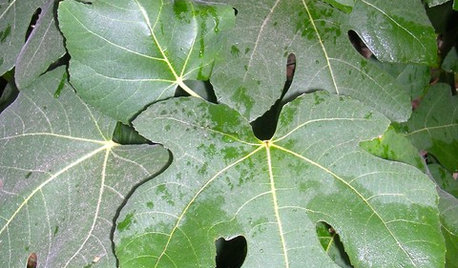
GARDENING GUIDESGreat Design Plant: Common Fig
A full form and delicious fruits make this Middle Eastern tree a favorite in gardens around the world
Full Story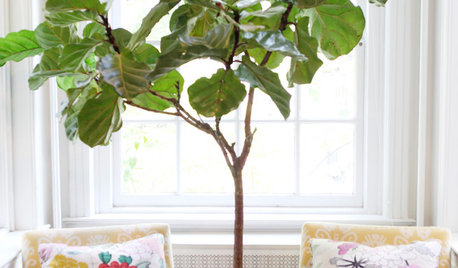
HOUSEPLANTSPlay Up Some Fiddleleaf Figs for a Lively Indoor Tune
Strike a dramatic chord in a minimalist scene or a country note in a rustic setting — fiddleleaf fig plants harmonize with any style
Full Story
HOUSEPLANTSSee How Fiddleleaf Fig Trees Can Liven Up Your Decor
The tropical houseplant with big green leaves adds a cheerful and striking design element to rooms
Full Story
DECORATING GUIDESHow to Use Full-Scale Decor to Make a Small Space Feel Bigger
With a less-is-more approach, even oversize furnishings can help a compact area seem roomier
Full Story
EARTH DAYHow to Design a Garden for Native Bees
Create a garden that not only looks beautiful but also nurtures native bees — and helps other wildlife in the process
Full Story
LIFEWhy We Want a House With a Great View
Research shows that just looking at nature has powerful mental benefits. Here's how to get a boost — with or without a million-dollar view
Full Story
HOUZZ TOURSHouzz Tour: New Love and a Fresh Start in a Midcentury Ranch House
A Nashville couple, both interior designers, fall for a neglected 1960 home. Their renovation story has a happy ending
Full Story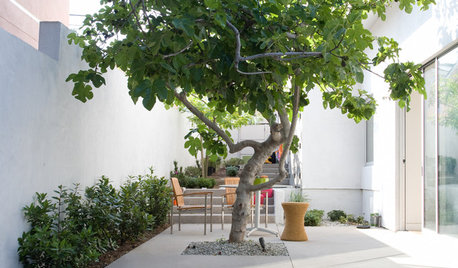
TREES10 Spectacular Trees for Courtyards and Tight Spaces
Here are some top small-scale trees for 4-season interest, easy care and little mess
Full Story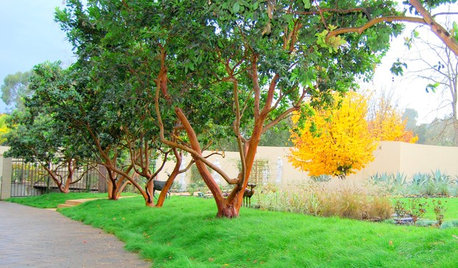
GARDENING GUIDESGarden Myths to Debunk as You Dig This Fall and Rest Over Winter
Termites hate wood mulch, don’t amend soil for trees, avoid gravel in planters — and more nuggets of garden wisdom
Full Story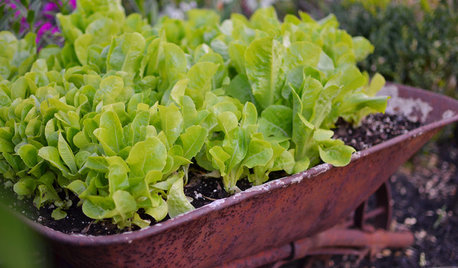
GARDENING GUIDESYes, You Can Grow Food in a Shady Yard
Your shady garden doesn’t have to be forever barren. Berries, herbs and other shade-loving plants can produce a delicious bounty
Full Story


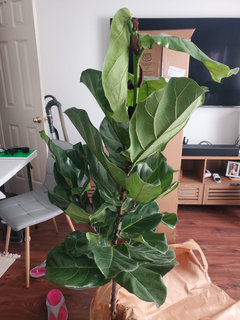
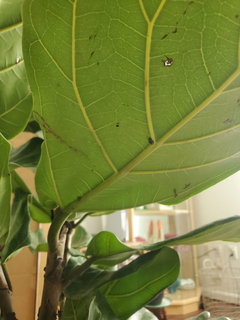
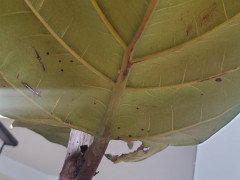


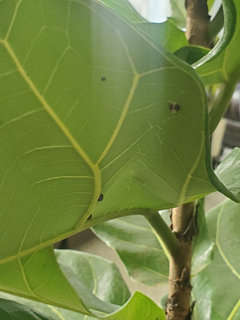
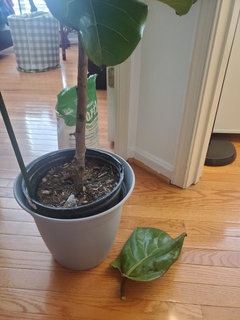
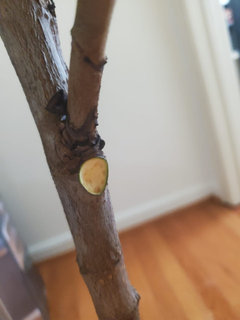

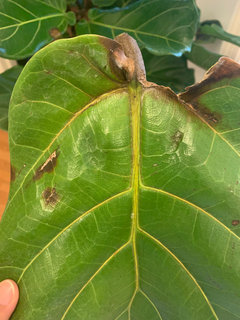



tapla (mid-Michigan, USDA z5b-6a)